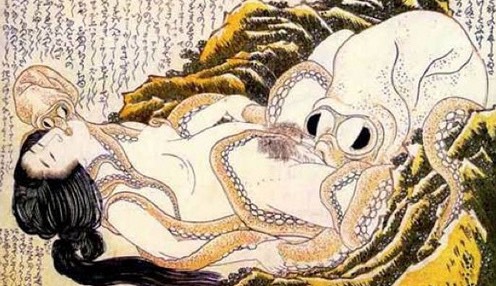
Shunga — Japan’s Art of Love
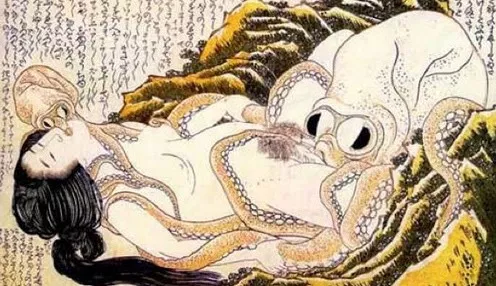
About the same time that sexually explicit materials were emerging in late Renaissance Italy — an art form called Shunga began flourishing in 17th century Japan. Much like with what had happened with the printing press in the west, advances in technology in the 1680s reduced the time and cost of producing woodblock prints. Erotic prints that originally had been created for sex manuals began being marketed for purposes of titillation.
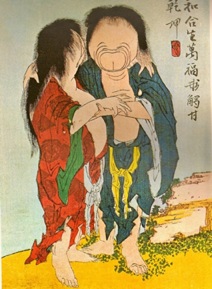
Mr. and Mrs.Shunga, which translates as “images of spring,” originally evolved from matrimonial manuals for newlyweds called “pillow books.” These books featured graphic images of foreplay and examples of sexual positions deemed essential to a successful marriage.
The new genre of titillation became known as Shunga — a combination of two words: “shun” from baishun (”selling spring” — a euphemism for prostitution) and ga (picture). This term was chosen because most Shunga dealt with the world of prostitution, a flourishing industry in Edo (now Tokyo) by the 17th century.

Man Woman Baby
In Edo, there were thousands of Samurai in the service of the Shogun, or feudal lord — and very few available women. Consequently, there was an enormous demand for prostitution. This resulted in the establishment of Yoshiwara, a twenty-acre brothel complex housing over 3,000 prostitutes. It was here that Shunga was born.
Originally, the idea behind Shunga prints was to advertise the facilities in Yoshiwara, This new art form, however, took on a life of its own, resulting in explicit images of every imaginable form — from straight heterosexual acts to gay sex, masturbation, bestiality and other forms of sex-play. Shunga became extremely popular, and both men and women of all levels of society enjoyed these prints.
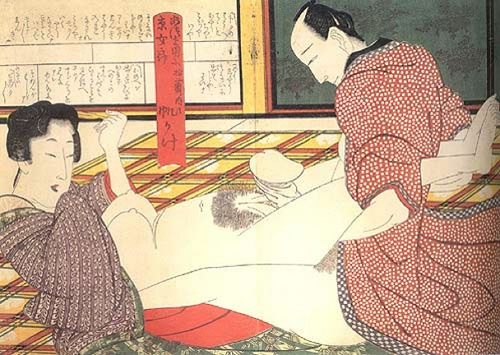
Big genitals
Some things to note about Shunga. There are often outrageously proportioned genitalia — along with some amazing sexual positions. Frequently, the figures in Shunga are either clothed or half clothed, with only the genitalia exposed, a condition that was considered highly stimulating by the Japanese.

Bathing Woman
One explanation for this is that nakedness in itself was not considered erotic. Public nudity was a way of life for the Japanese — mixed bathing in public bathhouses was the norm so this idea of partial undress was deemed exciting.
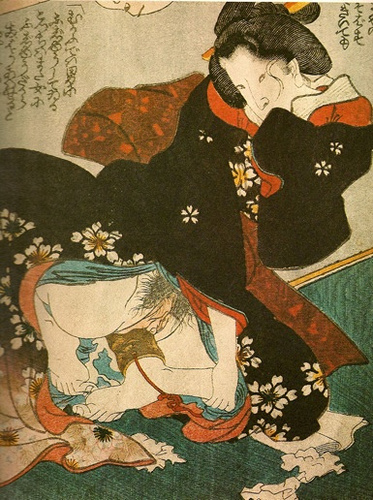
Masturbating Woman
Unlike attitudes in the West, there was also no shame associated with masturbation, another common Shunga theme. This rather athletic pose is called Woman Masturbating with Dildo — and one can see it cleverly attached to her heel.
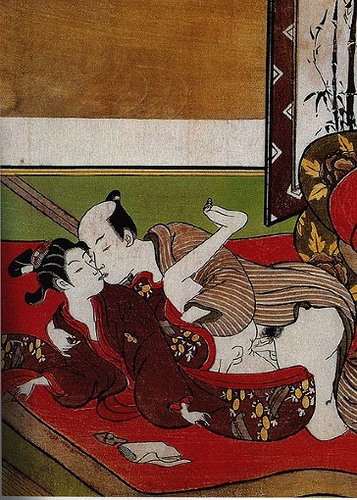
Same Sex Male Lovers
Nor is it unusual to find same sex lovers in Shunga. Japanese homoerotic art is replete with kissing and fondling between horny Samurai and their apprentices, or even more often, Kabuki actor youths moonlighting as gay prostitutes.
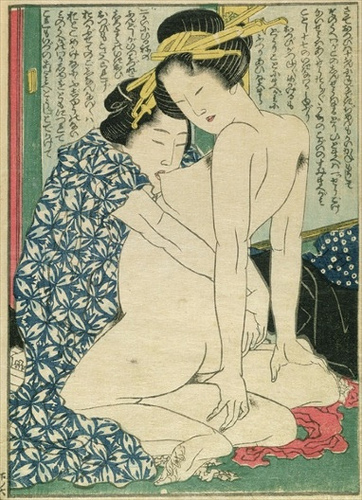
Lesbian Lovers
So for the Japanese of this time period, sex was regarded as a joyful union between lovers with any number of variations possible.

Fisherman’s wife
Probably one of the most recognizable and celebrated images is the very famous Dream of the Fisherman's Wife by Hokosai from about 1820. It depicts a woman entwined sexually with a pair of octopuses (or octopodes!), the smaller of which wraps one of its tentacles around the woman's nipple and kisses her, while the larger one performs cunnilingus.
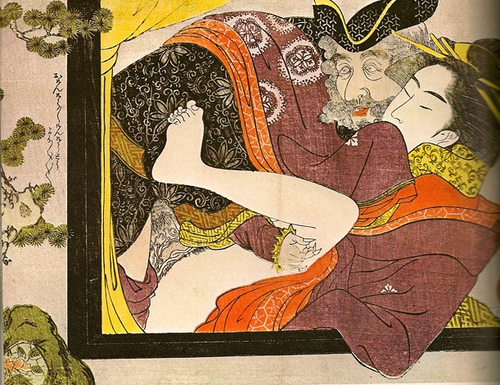
White Man with Geisha
This is an unusual example in that it depicts a Dutch foreigner. To the Japanese, the expressive face of the Westerner appears somewhat demonic. The expressionless white painted face of the geisha was considered the Japanese ideal.
The arrival of the American, Commodore Perry, in 1858 was the beginning of the end for this genre of Shunga. With the gradual exposure to a Western value system, a new form of morality was imposed in Japan and Shunga pretty much disappeared. The good news is —there were a lot of prints that weren’t destroyed and have thus been saved by museums and collectors around the world. In Japan, ironically, Shunga is still considered pornographic.
